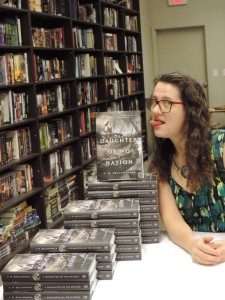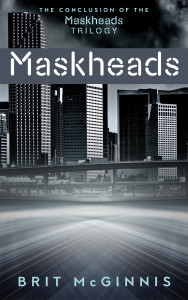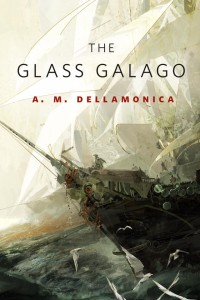 I had to do a fair bit of pondering before I set out to write this essay, which kept it from happening as quickly as I would’ve liked. There were a number of reasons for this, some of which were circumstantial–the holidays, other stuff–and some of which boiled down to wrapping my head around what to say and how to say it.
I had to do a fair bit of pondering before I set out to write this essay, which kept it from happening as quickly as I would’ve liked. There were a number of reasons for this, some of which were circumstantial–the holidays, other stuff–and some of which boiled down to wrapping my head around what to say and how to say it.
The Flame in the Maze is Caitlin Sweet’s sequel to 2014’s The Door in the Mountain from Chizine Publications ChiTeen imprint. Taken together, the two novels are a retelling of the story of Theseus and the Minotaur, starting around the time the latter is born and wrapping up, as the myths do, with Theseus sailing away from certain death in gory masculine triumph.
The broad strokes of the story follow those of the myth, so I’m going to be spoilery in a very particular way, in that I’ll assume that you know those strokes. That there’s an inescapable maze, for example, built by Daedalus, and a girl named Ariadne who tells Theseus how to hack the labyrinth so he can slaughter its resident monster and get out.
Sweet’s beautifully nuanced retelling centers around some arguably lucky individuals who are blessed by the gods–godmarked, the Minoans and Greeks call it–and, occasionally, are even born to them. Daedalus’s miraculously crafty hands are a gift from on high, for example, as are the bird-like characteristics of his son, Icarus. Theseus, meanwhile, is a bit of a telepath.
The first book is largely the tale of Ariadne… it has an ensemble cast, but its story is driven by her. Gorgeous, an accomplished dancer, a bona fide princess and malicious to her rotten core, Ariadne is consumed by jealousy for her godmarked sisters and brothers. She’s got a little sister who can open any lock, for one thing. The real focus of her rage, though, is her little brother Asterion, who transforms into a fusion of boy and bull whenever he is exposed to extreme heat.
In The Door in the Mountain, Ariadne plays upon her father’s significant personality defects and convinces him to build the labyrinth of myth as a prison for her brother. She maneuvers him into demanding Athenian sacrifices to Asterion and has the satisfaction not only of seeing her brother imprisoned but of forcing him onto a diet of soylent green and paltry temple offerings.
But although she seems to have pulled off the perfect villainous plan, the cracks are already setting in. A slave girl, Chara, who loves Asterion, has slipped herself in with the latest batch of sacrifices to see if she can save him. And although Ariadne has enlisted the prince Theseus to assassinate her brother, it turns out he’s just not the sort a fellow a girl can trust.
There’s also the minor issue of her father’s eroding mental health. He’s got some ideas whose realization might result in something truly apocalyptic.
The Flame in the Maze reads a little like a time travel novel when it picks up the action from The Door in the Mountain. This illusion prevails due to the fact that the story really gets underway once Theseus is in the maze… but the various character threads require Sweet to bring us up-to-date with people who’ve been trapped in the Labyrinth, and elsewhere, for years. (I love time travel of all sorts, so this section is a little like ravishing a box of bonbons.)
Icarus and his father Daedalus, for example, were locked up by King Minos, not in the Labyrinth but in an isolated cavern elsewhere, with nobody but each other for company. We get to see how they coped. And each set of Athenian sacrifices, the ones tossed into the Labyrinth at two year intervals and presumed dead at Asterion’s horns, has met a slightly different awful fate from the previous cohort.
The story loops back to catch each thread, until the reader and everyone else is, more or less, finally in the same moment. By then, escaping Crete entirely is the only thing any of the characters can hope to do, for there is no stopping the king from achieving his world-shattering plans.
Though Ariadne sowed almost all of the seeds of the story in the first novel, she is very nearly an afterthought in the second. She’s reaping a whirlwind of her own construction, and it’s too powerful for her–for any of them–to dial down. Understandably, nobody is deceived by her anymore. Still, I missed her scheming in this second book. She is the true monster of the story, after all, and even though her brother becomes genuinely fearsome over the course of his imprisonment, it is interesting to compare them, the calculating master villain on the one hand, the helpless prisoner to magical appetite on the other.
Sweet’s take on the familiar myth is true enough to make the story recognizable, and yet its points of difference are numerous and–no surprise, if you know this author’s work–heartbreaking. There are plenty of surprises, and they all feel just right. Of these, the most poignant is the fate of Icarus. Everything that happened to him absolutely wrecked me.
I also came out of the first book shipping Asterion and Chara, and their ultimate fate makes perfect sense. (Other readers will be happy with it too, I think. I hope.)
Different versions of the original myth disagree on whether Ariadne was deliberately abandoned by Theseus on Naxos or if she slept in and was left behind by mistake. Her fate is the final mystery of this book, the last piece of a puzzle as intricate as the Labyrinth itself, and it slides into place with the sureness of a well-wrought lock clicking shut. Perhaps the greatest success of The Flame in the Maze is that it makes you feel as though you won’t get out of the Labyrinth; its author takes you to one of those fictional places you carry ever after, a combination of scar and badge of honor, and a chamber of horrors occasionally–very occasionally–illuminated by its best characters’ moments of humanity and compassion.

Author’s note: Caitlin Sweet is a friend of mine, and that gets one a friendly reading. I can’t claim strict impartiality–though, really, I’m never impartial where books are concerned. If I finished it, I loved it. I will also tell you for free that Sweet did an interview for my The Heroine Question, and you can read that here.
 A rather brisk deadline has fallen upon me this month, and so I’m madly polishing The Nature of a Pirate in order that all of you may have it later this year. If you’ve been wondering why I’m not as Twittery or active on the Book of Face lately, that would be the big reason. It’s in a good cause, and it won’t last long. Look–it’s in the MacMillan catalogue! Actually, don’t, as there’s nothing much there yet beyond the title. I wish I could show you the preliminary cover art. It’s so pretty.
A rather brisk deadline has fallen upon me this month, and so I’m madly polishing The Nature of a Pirate in order that all of you may have it later this year. If you’ve been wondering why I’m not as Twittery or active on the Book of Face lately, that would be the big reason. It’s in a good cause, and it won’t last long. Look–it’s in the MacMillan catalogue! Actually, don’t, as there’s nothing much there yet beyond the title. I wish I could show you the preliminary cover art. It’s so pretty.


 I had to do a fair bit of pondering before I set out to write this essay, which kept it from happening as quickly as I would’ve liked. There were a number of reasons for this, some of which were circumstantial–the holidays, other stuff–and some of which boiled down to wrapping my head around what to say and how to say it.
I had to do a fair bit of pondering before I set out to write this essay, which kept it from happening as quickly as I would’ve liked. There were a number of reasons for this, some of which were circumstantial–the holidays, other stuff–and some of which boiled down to wrapping my head around what to say and how to say it.
 cGinnis
cGinnis My 2015 books read list is embarrassingly short, in part because I reread quite a few things, in part because I tanked out of a lot of things. This does mean that if it’s on here, it was quite a good book. I also read a stonking pile of short fiction but was miserable at capturing the individual stories. Here’s the list of novels:
My 2015 books read list is embarrassingly short, in part because I reread quite a few things, in part because I tanked out of a lot of things. This does mean that if it’s on here, it was quite a good book. I also read a stonking pile of short fiction but was miserable at capturing the individual stories. Here’s the list of novels:
